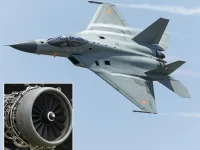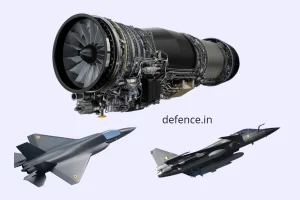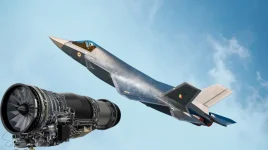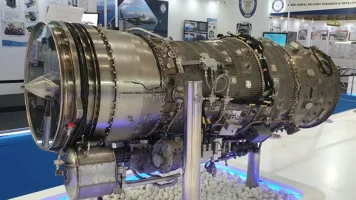In the wake of heightened India-Pakistan tensions following the deadly April 2025 Pahalgam terror attack, reports suggest Indian strategic planners are reassessing their response options.
With Pakistan suspending the Shimla Agreement, threatening withdrawal from the Tashkent Agreement, and reacting aggressively to India's suspension of the Indus Waters Treaty (IWT), the prevailing view in New Delhi is that the delicate peace along the Line of Control (LoC) in Jammu and Kashmir is increasingly unsustainable.
Amidst this volatile backdrop, attention within India's military establishment appears to be shifting. Rather than solely focusing on the traditional flashpoint of the LoC, consideration is reportedly being given to the International Border (IB) adjacent to Pakistan's Punjab province.
This potential strategy involves leveraging artillery power and troop mobilization along the Punjab border to directly pressure Pakistan's military leadership, aiming to create instability within their ranks and challenge the army's internal unity.
The LoC, a 740-km de facto border through Jammu and Kashmir, has long been characterized by ceasefire violations and cross-border tensions. The ceasefire renewed in 2021 has become severely strained, particularly after the Pahalgam attack which claimed 26 civilian lives.
Pakistan's formal suspension of the Shimla Agreement, which established the LoC framework, has further eroded bilateral mechanisms for maintaining regional peace. Indian defence analysts anticipate Pakistan may increase infiltration attempts and shelling across the LoC to exert pressure regarding the IWT dispute.
However, the rugged, mountainous terrain and heavily fortified defences along the LoC present significant challenges for achieving decisive military outcomes. Both nations maintain substantial forces there, with India's Northern Command deploying hundreds of thousands of troops and advanced air defence systems like the S-400.
Consequently, military strategists recognise that influencing the broader conflict may necessitate opening a front along the more accessible plains of the 553-km IB section bordering Pakistan's Punjab.
This stretch of the IB, from Jammu's Kathua district down to Rajasthan, offers flat terrain ideal for large-scale armour, artillery, and infantry movements.
India's Western Command, based in Chandimandir, is responsible for this area and fields powerful formations like the II Strike Corps headquartered in Ambala. This corps is equipped with advanced assets including T-90S Bhishma main battle tanks, BrahMos supersonic cruise missiles, and Pinaka multi-barrel rocket launchers (MBRLs).
While Pakistan defends this area with its Multan-based II Corps, these forces are believed to be stretched due to commitments elsewhere, including the LoC and the border with Afghanistan.
Strategically, Pakistan's Punjab province represents the nation's political, economic, and military core. It hosts major cities like Lahore and Rawalpindi, the Army's General Headquarters (GHQ), key airbases, and contributes roughly 60% of the country's GDP.
Crucially, it is the power base for the influential Punjabi elite within the military, who constitute a majority of the officer corps. Therefore, any direct military threat to this region, such as significant Indian artillery fire on border infrastructure or nearby areas, could profoundly affect Pakistan's national morale and undermine the military establishment's standing.
India possesses artillery systems like the Pinaka and Smerch MBRLs, BrahMos missiles, and Dhanush howitzers capable of striking targets within 10-20 km of the IB, including Pakistani forward positions and logistics centres in districts like Sialkot and Narowal.
Advancements in precision munitions, such as Excalibur shells, allow for targeted strikes designed to maximize strategic impact while potentially minimizing civilian casualties.
Such actions targeting the Punjab heartland could force Pakistan into difficult choices. The military would likely need to divert significant resources – troops, armour, and air defence assets – from the LoC and other regions to bolster Punjab's defence, thereby weakening its posture on other fronts.
Furthermore, military action could severely disrupt Punjab's vital agricultural and industrial base, worsening Pakistan's already challenged economy (where inflation reportedly hit 30% in 2024).
The inability to protect their home province could also generate internal pressure on the Punjabi military leadership, potentially creating friction within the army.
Assessments suggest Pakistan's II Corps, while equipped with capable T-80UD and Al-Khalid tanks, may face numerical disadvantages against India's II Strike Corps.
Moreover, Pakistan's advanced air defence systems are reportedly concentrated around key strategic locations elsewhere, potentially leaving border areas in Punjab more vulnerable to Indian air power, including Rafale jets and BrahMos missiles.
This potential focus on the Punjab border appears consistent with India's wider diplomatic efforts to isolate Pakistan internationally, particularly following global condemnation of the Pahalgam terror attack.
By considering military options that strike at the core of Pakistan's power structure, India aims to create strategic leverage extending beyond the confines of conventional LoC engagements.







